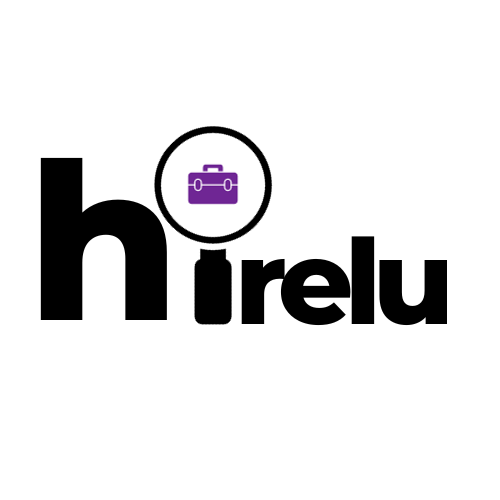In today’s competitive job market, having a well-written resume is essential. Your resume is often the first impression you make on a potential employer, and it can determine whether or not you get called in for an interview. Crafting the perfect resume requires careful thought and attention to detail. In this blog post, we will discuss the importance of a well-written resume, what employers look for in a resume, when to consider professional help, how to write a resume step-by-step, dos and don’ts for a successful job application, tailoring your resume to the job description, making your resume stand out with design and format, proofreading and editing your resume, and finally, putting it all together to secure your dream job.
Key Takeaways
- A well-written resume is crucial for securing your dream job.
- Employers look for specific skills and experiences in a resume during the hiring process.
- Consider professional help from a resume writing service if you’re struggling to craft the perfect resume.
- Follow a step-by-step guide and dos and don’ts to write a successful resume.
- Tailor your resume to the job description and use design and formatting to make it stand out.
The Importance of a Well-Written Resume
A well-written resume is crucial in the job application process for several reasons. First and foremost, it serves as a snapshot of your skills, experience, and qualifications. It provides potential employers with a quick overview of who you are and what you can bring to the table. A well-written resume can make you stand out from other applicants by showcasing your unique strengths and accomplishments.
Furthermore, a well-written resume demonstrates your professionalism and attention to detail. Employers often receive hundreds of resumes for a single job opening, so it’s important to make yours stand out. A poorly written or sloppy resume can give the impression that you are not serious about the position or that you lack attention to detail. On the other hand, a well-crafted resume shows that you have taken the time and effort to present yourself in the best possible light.
Understanding the Hiring Process: What Employers Look for in a Resume
To craft the perfect resume, it’s important to understand what employers are looking for. Employers typically spend only a few seconds scanning each resume before deciding whether or not to move forward with an applicant. Therefore, it’s crucial to make your resume easy to read and highlight the most relevant information.
Employers are looking for a few key things in a resume. First and foremost, they want to see that you have the necessary skills and qualifications for the job. This means including relevant work experience, education, and certifications. It’s also important to tailor your resume to the specific job description. This means highlighting the skills and experience that are most relevant to the position you are applying for.
Resume Writing Service: When to Consider Professional Help
| Metrics | Data |
|---|---|
| Number of job applications submitted | 50 |
| Number of interviews received | 2 |
| Number of job offers received | 0 |
| Time spent on job search | 3 months |
| Number of resume revisions made | 5 |
| Cost of professional resume writing service | 300 |
| Time saved by using professional resume writing service | 2 months |
| Number of job offers received after using professional resume writing service | 3 |
While it is possible to write a great resume on your own, there are times when it may be necessary to hire a professional resume writer. If you are struggling to craft a compelling resume or if you are changing careers and need help rebranding yourself, a professional resume writer can be a valuable resource.
A professional resume writer can help you highlight your strengths and accomplishments in a way that is tailored to the job you are applying for. They can also provide valuable insights and advice on how to make your resume stand out from the competition. Additionally, a professional resume writer can save you time and frustration by taking care of the formatting and design aspects of your resume.
How to Write a Resume: A Step-by-Step Guide
Writing a resume can seem like a daunting task, but with a step-by-step guide, it becomes much more manageable. Here is a breakdown of the key steps involved in writing a resume:
1. Start with a header: Include your name, contact information, and professional summary at the top of your resume.
2. Include your work experience: List your previous jobs in reverse chronological order, starting with your most recent position. Include the company name, job title, dates of employment, and a brief description of your responsibilities and accomplishments.
3. Highlight your education: Include your educational background, including degrees earned, schools attended, and any relevant coursework or certifications.
4. Showcase your skills: Create a separate section to highlight your key skills and qualifications. This can include both hard skills (such as proficiency in a specific software program) and soft skills (such as communication or leadership abilities).
5. Include any relevant achievements or awards: If you have received any awards or recognition for your work, be sure to include them on your resume.
6. Tailor your resume to the job description: Review the job description and make sure to highlight the skills and experience that are most relevant to the position you are applying for.
7. Proofread and edit: Before submitting your resume, be sure to proofread it carefully for any errors or typos. It’s also a good idea to have someone else review it for you to catch any mistakes you may have missed.
Resume Writing Tips: Dos and Don’ts for a Successful Job Application

When writing a resume, there are several dos and don’ts to keep in mind. Here are some tips to help you craft a successful job application:
Do:
– Use clear and concise language
– Use bullet points to make your resume easy to read
– Quantify your accomplishments whenever possible (e.g., “increased sales by 20%”)
– Use action verbs to describe your responsibilities and achievements (e.g., “managed,” “developed,” “implemented”)
– Tailor your resume to the specific job description
– Include keywords from the job posting to help your resume get past applicant tracking systems
Don’t:
– Include irrelevant information or personal details (e.g., marital status, hobbies)
– Use generic or cliché phrases (e.g., “team player,” “good communication skills”)
– Use excessive jargon or technical terms that may not be understood by all readers
– Include references on your resume (these can be provided upon request)
– Submit a resume with spelling or grammatical errors
Tailoring Your Resume to the Job Description: Showcasing Your Skills and Experience
One of the most important aspects of crafting the perfect resume is tailoring it to the job description. This means highlighting the skills and experience that are most relevant to the position you are applying for. Here are some tips on how to do this effectively:
1. Review the job description: Read the job description carefully and make note of the key skills and qualifications that are required for the position.
2. Identify your relevant skills and experience: Take a close look at your own skills and experience and identify those that align with the requirements of the job.
3. Highlight your relevant skills and experience: Once you have identified your relevant skills and experience, make sure to highlight them prominently on your resume. This can be done by including them in your professional summary, work experience section, or skills section.
4. Provide specific examples: Whenever possible, provide specific examples of how you have used your skills and experience to achieve positive results. This can help demonstrate your value to potential employers.
Design and Format: Making Your Resume Stand Out
In addition to the content of your resume, the design and format can also play a role in making it stand out from the competition. Here are some tips on how to make your resume visually appealing:
1. Use a clean and professional font: Choose a font that is easy to read and looks professional, such as Arial or Times New Roman.
2. Use bullet points: Bullet points can help make your resume easy to scan and highlight key information.
3. Use white space effectively: Leave plenty of white space on your resume to make it look clean and organized.
4. Use headings and subheadings: Use headings and subheadings to break up different sections of your resume and make it easier to read.
5. Use consistent formatting: Make sure that your formatting is consistent throughout your resume. This includes things like font size, spacing, and alignment.
Proofreading and Editing: Avoiding Common Mistakes
Proofreading and editing your resume is an essential step in the resume writing process. Even the smallest typo or error can make a negative impression on potential employers. Here are some tips to help you avoid common mistakes:
1. Take a break before proofreading: After you have finished writing your resume, take a break before proofreading it. This will help you approach it with fresh eyes and catch any mistakes you may have missed.
2. Read your resume out loud: Reading your resume out loud can help you catch errors or awkward phrasing that may not be immediately apparent when reading silently.
3. Use spell check: Use the spell check function in your word processing software to catch any spelling errors. However, be aware that spell check may not catch all errors, so it’s important to proofread manually as well.
4. Have someone else review your resume: It’s always a good idea to have someone else review your resume for errors or typos. They may be able to catch mistakes that you have overlooked.
Putting It All Together and Securing Your Dream Job
Crafting the perfect resume is a crucial step in securing your dream job. By following the tips and advice provided in this blog post, you can create a well-written resume that highlights your skills and experience and makes you stand out from the competition.
Remember to tailor your resume to the specific job description, showcase your skills and experience effectively, and pay attention to the design and format of your resume. Proofreading and editing are also essential to avoid common mistakes.
By putting in the time and effort to craft a compelling resume, you can increase your chances of getting called in for an interview and ultimately securing your dream job. Good luck!
Looking for professional resume writing services to enhance your job application? Check out Hirelu’s comprehensive range of resume writing services that can help you stand out from the competition. Whether you’re a student looking for the best domain name or a seasoned professional seeking to reshape your leadership team, Hirelu has got you covered. With their expertise in crafting attention-grabbing resumes, you can increase your chances of landing your dream job. Don’t miss out on this opportunity to boost your career prospects. Click here to learn more about their resume writing services.






1 Comment
[…] resume to the job description and the employer’s needs is a common mistake. Customize your resume for each job application to demonstrate your suitability for the […]
[…] job is unique, and employers are looking for specific qualifications and experiences. Tailoring the resume for each job application greatly increases the chances of getting noticed by hiring […]
[…] the percentage of job applications submitted with a cover […]